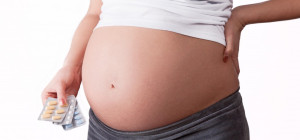 IVF or In Vitro Fertilization is an assistive reproductive technology (ART) which includes the process of fertilization by combining an egg and sperm manually in a lab dish and then administering the embryo into the uterus. Some other forms of ART also exist also include GIFT (Gamete Intrafallopian Transfer) and ZIFT (Zygote Intrafallopian Transfer). With the present generation women, there are many who suffer from different kinds of issues in their reproductive organs due to which they fail to get pregnant in the natural way. IVF is an artificial process that can help women with blocked fallopian tubes, ovulation disorders, fallopian tubes removed and some unexplained fertility.
IVF or In Vitro Fertilization is an assistive reproductive technology (ART) which includes the process of fertilization by combining an egg and sperm manually in a lab dish and then administering the embryo into the uterus. Some other forms of ART also exist also include GIFT (Gamete Intrafallopian Transfer) and ZIFT (Zygote Intrafallopian Transfer). With the present generation women, there are many who suffer from different kinds of issues in their reproductive organs due to which they fail to get pregnant in the natural way. IVF is an artificial process that can help women with blocked fallopian tubes, ovulation disorders, fallopian tubes removed and some unexplained fertility.
Egg donation and IVF
Before the development and introduction of in vitro fertilization, there were no such options for women suffering from ovarian failure or reduced ovarian reserve or other sexually transmitted diseases. The article will deal with an overview of egg donation and how the process works.
Step 1: Application and screening of egg donor
Before anything can happen, egg donors should apply to the egg donation program. They should go through the screening process which includes few rounds of interviews and some testing. Only the donor applicants who pass the screening steps will be added to egg donor program and this can then be matched with the recipient couple
Step 2: Egg donor matching
When a couple makes the decision of using donor eggs, they can check out the pool of online egg donors and then select from them. A donor egg match is only made when the recipient decides to move with a specific donor. If the donor of the egg is available during the time frame desired by the recipient and they pass the FDA round of testing, the final match is made.
Step 3: Ovarian stimulation and suppression for the egg donor
The egg donor has to take daily injections to suppress her natural egg cycle so that it matches that of the recipient. During the phase of ovary stimulation, the egg donor uses injections of gonadotropin which can stimulate the ovaries of the donor. Then the egg donors are supervised closely through different ultrasounds and blood tests, making sure that the ovaries are perfectly alright and aren't going into hyperstimulation.
Step 4: Ovulation and egg retrieval for the egg donor
When you get to know that the donor's eggs have developed perfectly, the donor will be instructed to opt for ovulation through an injection of hCG. 2 days later, the eggs are retrieved when the donor is asleep through IV sedation. The doctors use aspiration needle to transvaginally retrieves the eggs. The donor needs to take rest in order to recover.
It is then that the retrieved eggs are fertilized with the other partner's sperm and couples may expect to get pregnant in such a manner. Therefore, egg donation can certainly lead to a successfully pregnancy if it is done in a perfect manner. Get help of the best doctor who can help you with this and you may also take a look at Invimed for more information.







